In photos: The Christmas launch of NASA's James Webb Space Telescope

On Dec. 25, 2021, NASA's James Webb Space Telescope launched into space to peer farther back into the universe's history than ever before.
The Webb space telescope launched off planet Earth at 7:20 a.m. EST (1220 GMT) atop an Ariane 5 rocket built by Arianespace. The space telescope, NASA's biggest ever built, is headed to L2, or Lagrange Point 2, a stable point in space about 1 million miles from Earth where it will look for the first stars and galaxies in the universe.
You can see photos from NASA's Christmas launch of the Webb space telescope here.
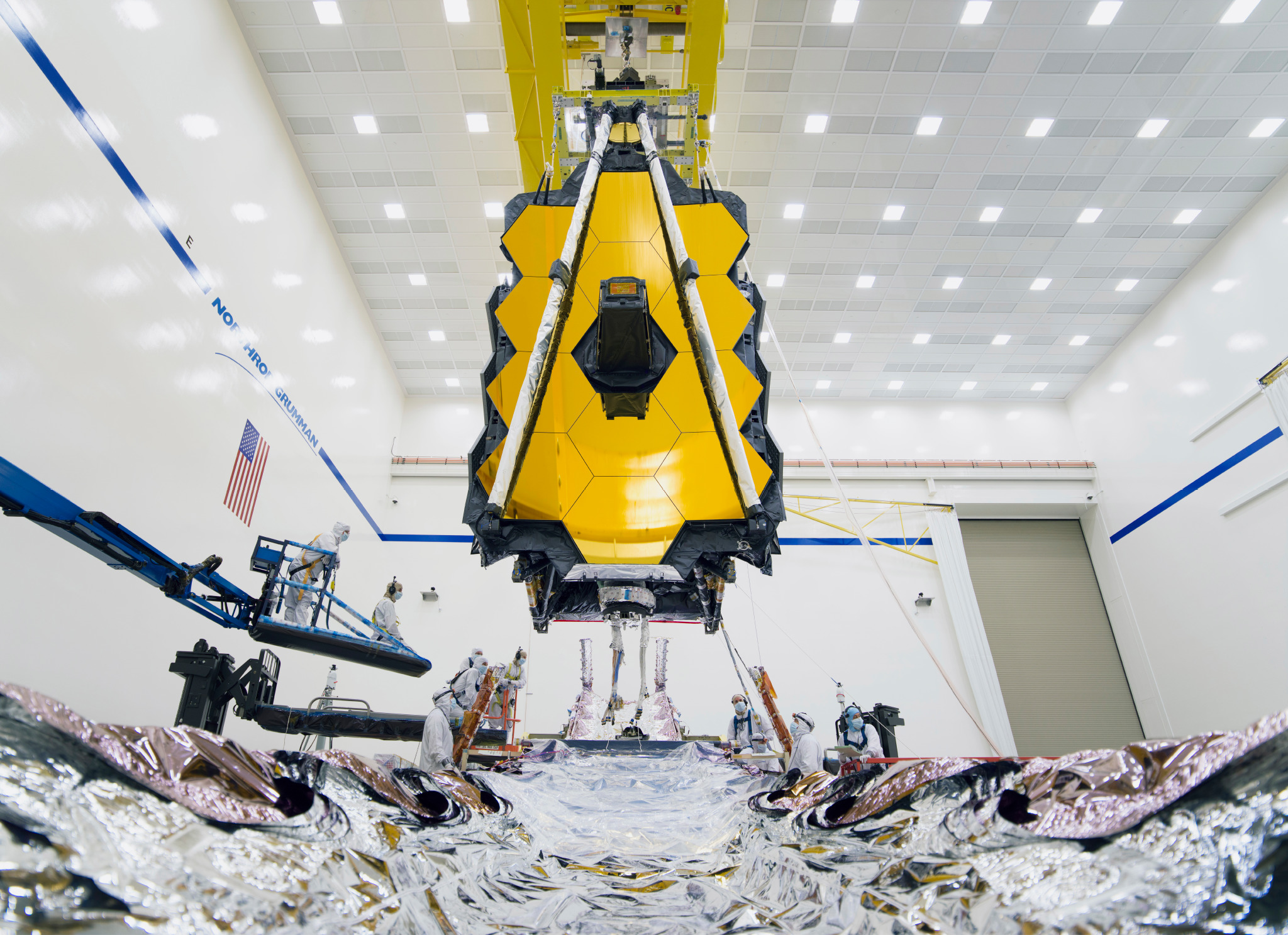
The James Webb Space Telescope is a $10 billion infrared observatory designed to explore the universe in infrared light.
Scientists hope it will help them unravel the mysteries of how the first stars formed, seek out dark matter mysteries and peer pack more than 13 billion years in time to the earliest days of the universe.
To do this, the space telescope will observe the universe at the L2 point and use a novel sunshield the size of tennis court to keep it ultracold - minus 370 degrees Fahrenheit - in order to detect the earliest light in the cosmos.

But first, James Webb Space Telescope had to leave Earth behind and to do that, it had to get to its launch site.
Here is the cargo ship carrying NASA's James Webb Space Telescope that arrived in French Guiana on Oct. 12, 2021, after a 16-day sea voyage. The space telescope is so large that it could not fit inside the payload fairings of most U.S. rockets, so NASA and its European Space Agency partners (among others) picked Arianespace's Ariane 5 heavy-lift rocket to carry the observatory.
Ariane 5 rockets launch from Europe's Guiana Space Center in Kourou, French Guiana in South America, so the Webb space telescope was shipped by cargo ship to the site with some secrecy, as the mission team was concerned about pirates.
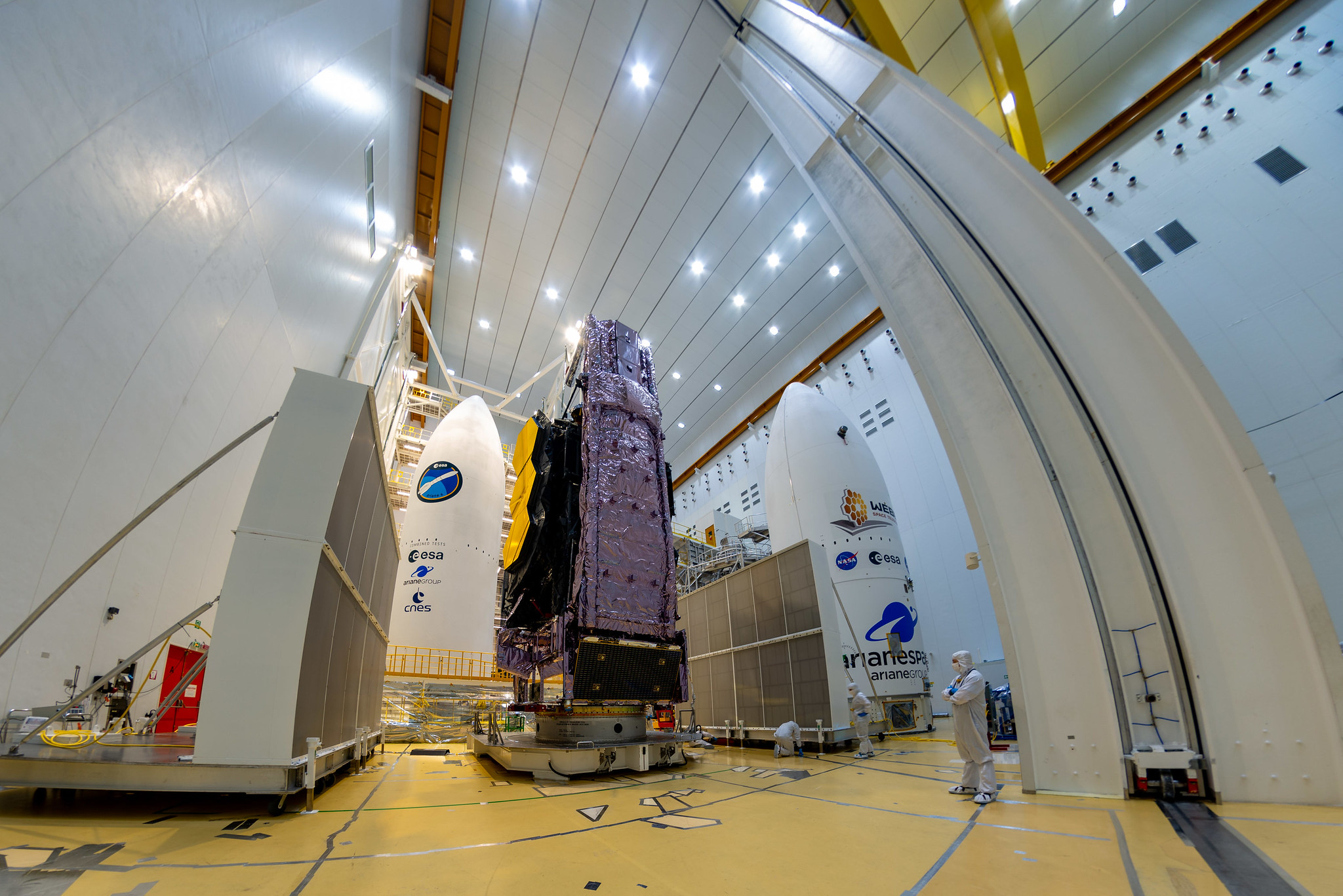
Once at the Guiana Space Center, Arianespace worked to install the James Webb Space Telescope atop its Ariane 5 rocket.
There were some glitches during assembly. First, a clamp shook loose and caused a launch delay as engineers checked Webb to make sure it was okay. Then a data cable between Webb and its rocket was not working properly. Both issues added more days of delays for the already delayed mission.

But despite those delays, the James Webb Space Telescope did reach the launch pad.
The Ariane 5 rocket carrying the space observatory made the short trek to its pad on Dec. 23, 2021. Here you can see an aerial view of Webb on the launch pad with its Ariane 5 rocket.
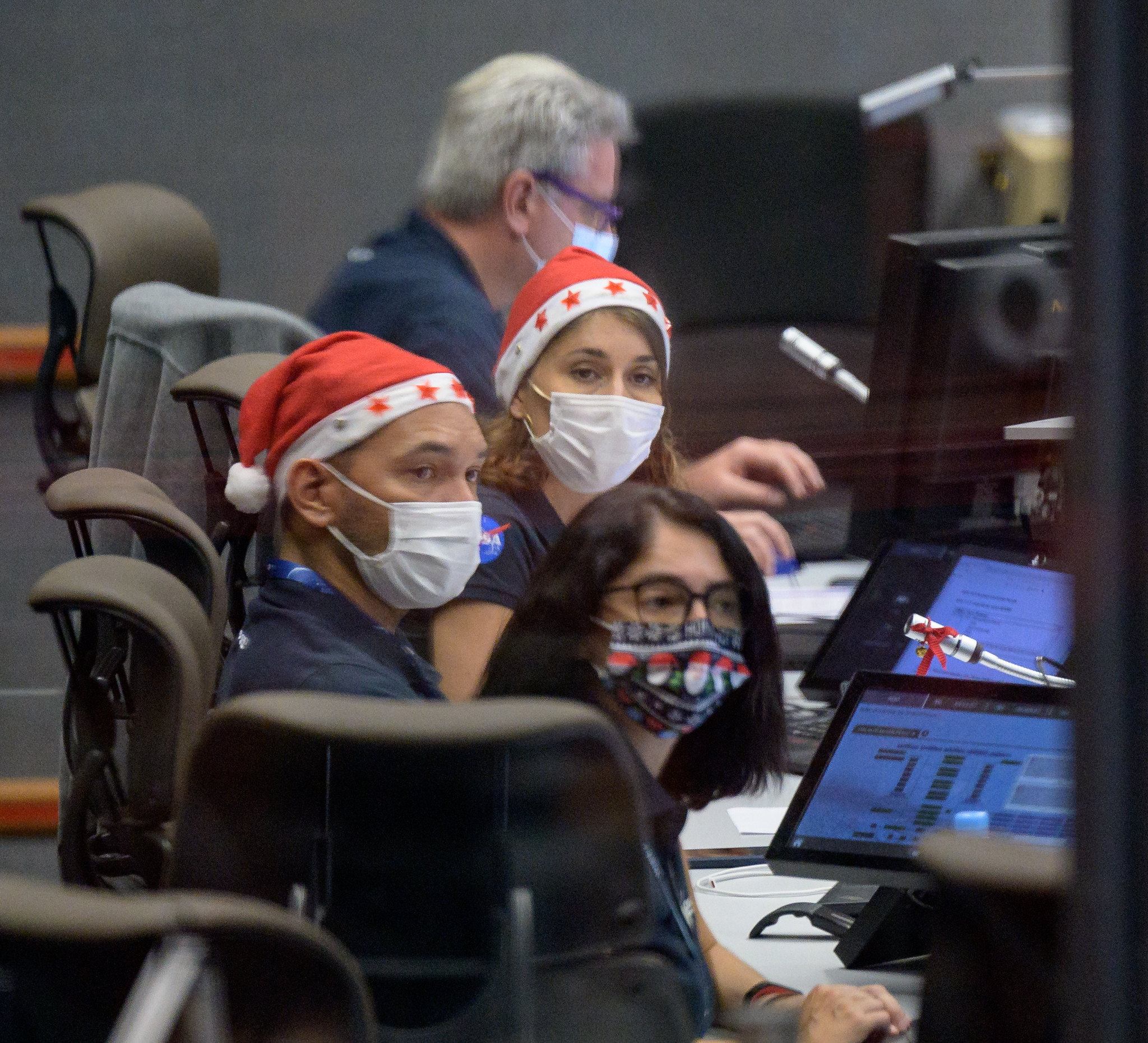
Here, launch controllers decked out in Santa hats and festive face masks watch over the Ariane 5 rocket systems for the James Webb Space Telescope's launch.
The Christmas launch was both celebrated and a challenge for Arianespace, NASA and other mission partners. With the launch originating from French Guiana, international travel restrictions from the coronavirus pandemic limited the amount of people able to travel for the launch.
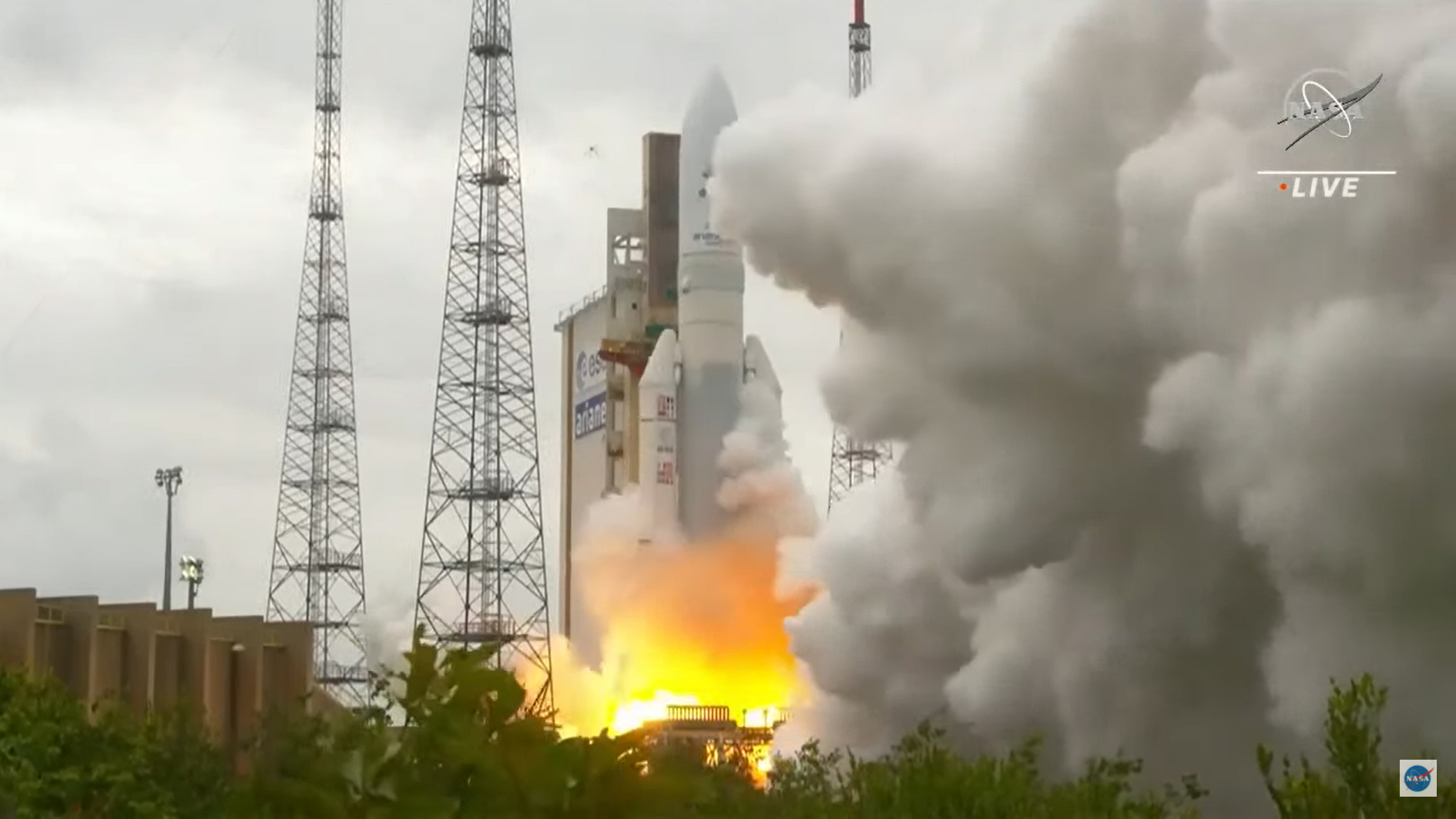
The moment of ignition for the Ariane 5 rocket carrying the James Webb Space Telescope is captured here in a NASA TV video still.
The Ariane 5 rocket generated 2.6 million pounds (1,200 tons) of thrust at liftoff with its main stage and two strap-on boosters. It took 27 minutes to fully deploy the space telescope into space.
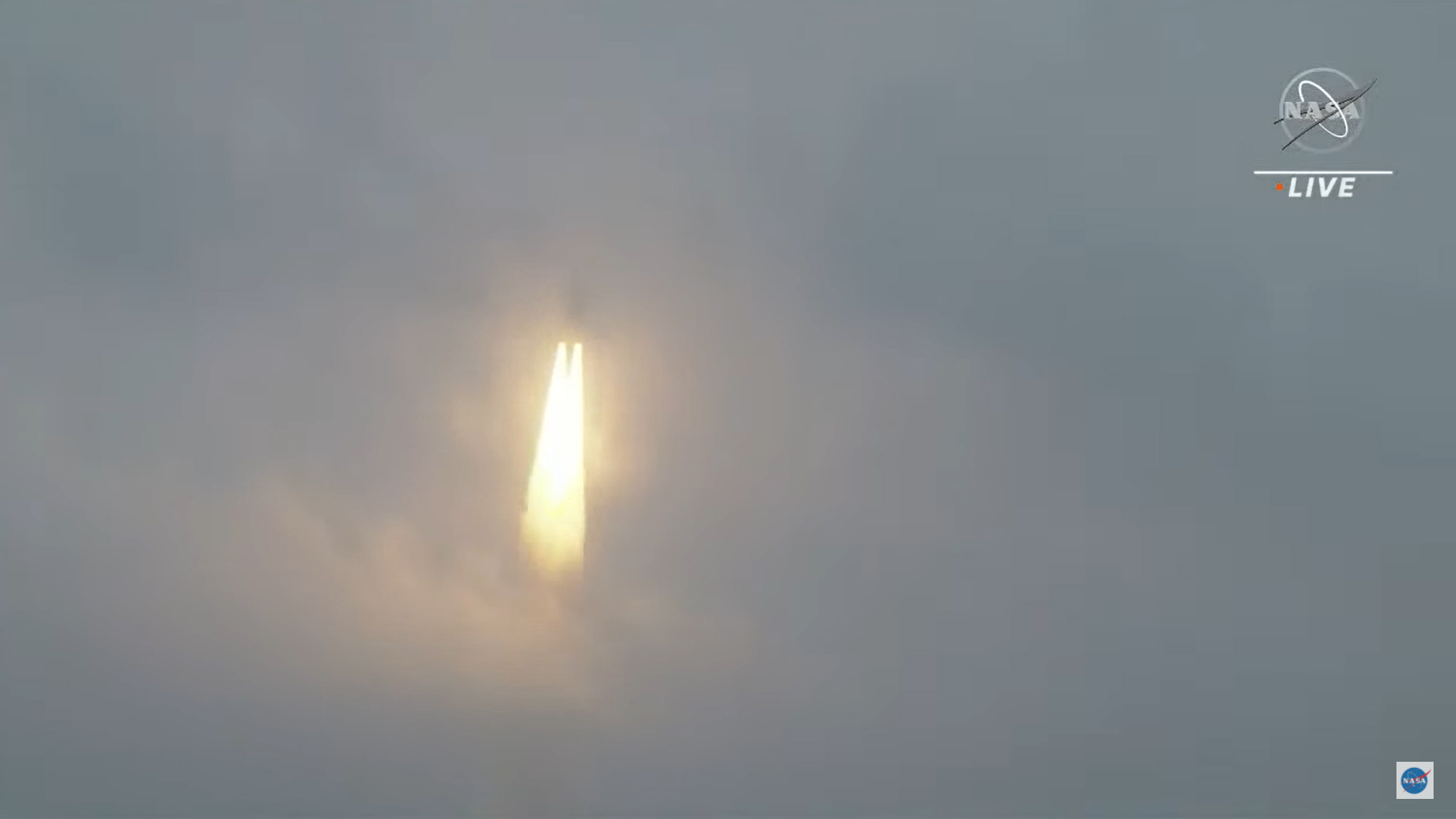
The Ariane 5 carrying the James Webb Space Telescope soared through some cloudy skies when it launched off the Earth.
Those clouds posed no problem for the launch, even though bad weather delayed the launch from a Christmas Eve liftoff to Christmas Day.
"Don't let those clouds fool you, we are go for launch," NASA's Rob Navias said before liftoff.
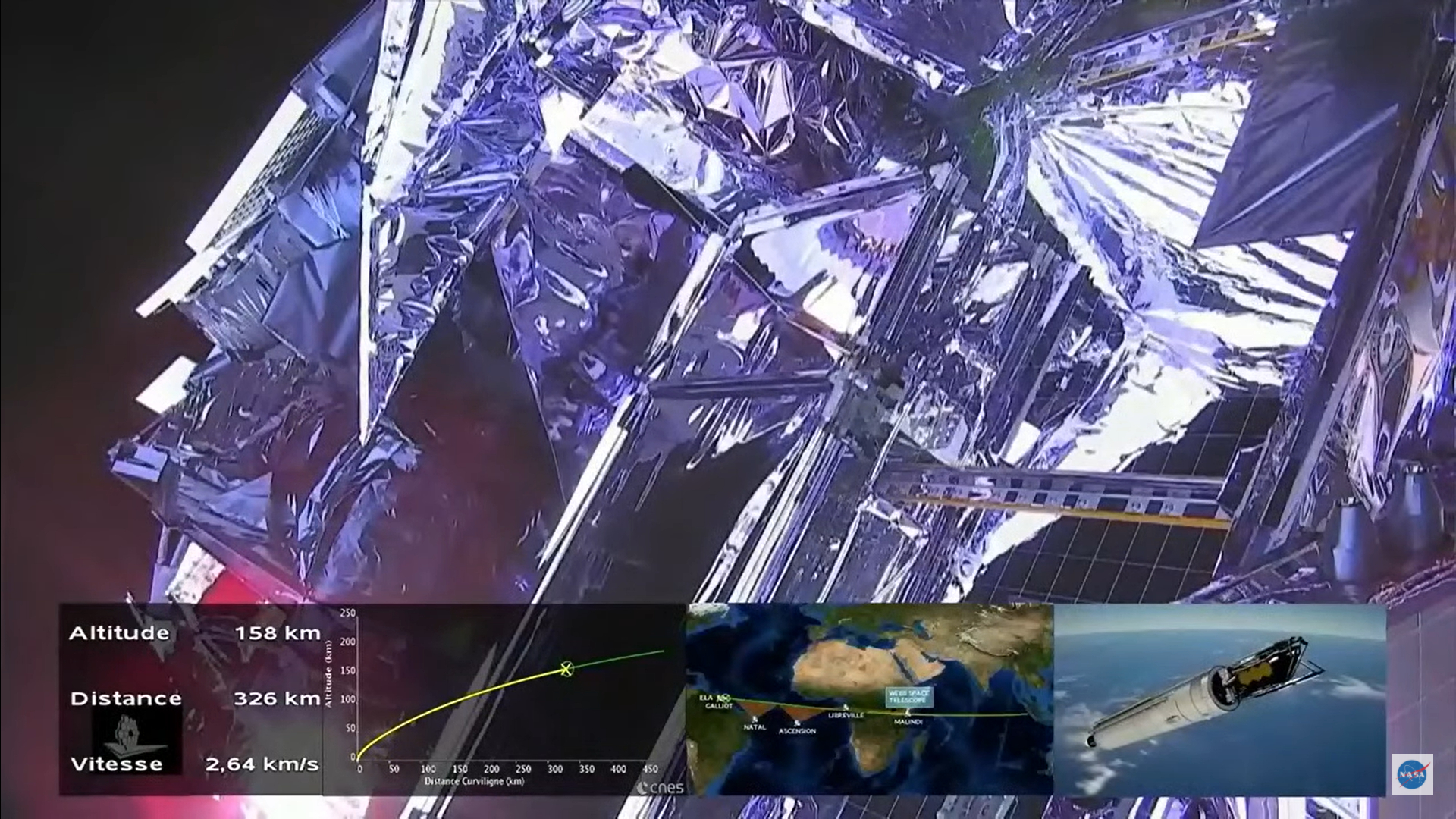
A camera on the James Webb Space Telescope's Ariane 5 rocket captured this view of the observatory all folded up for flight as it soared into space during launch.
At the bottom of the screen are several views that show the location of the rocket on its trajectory and the state of the space telescope itself.
At far right is a computer-generated view showing the telescope exposed after its payload fairing was jettisoned.
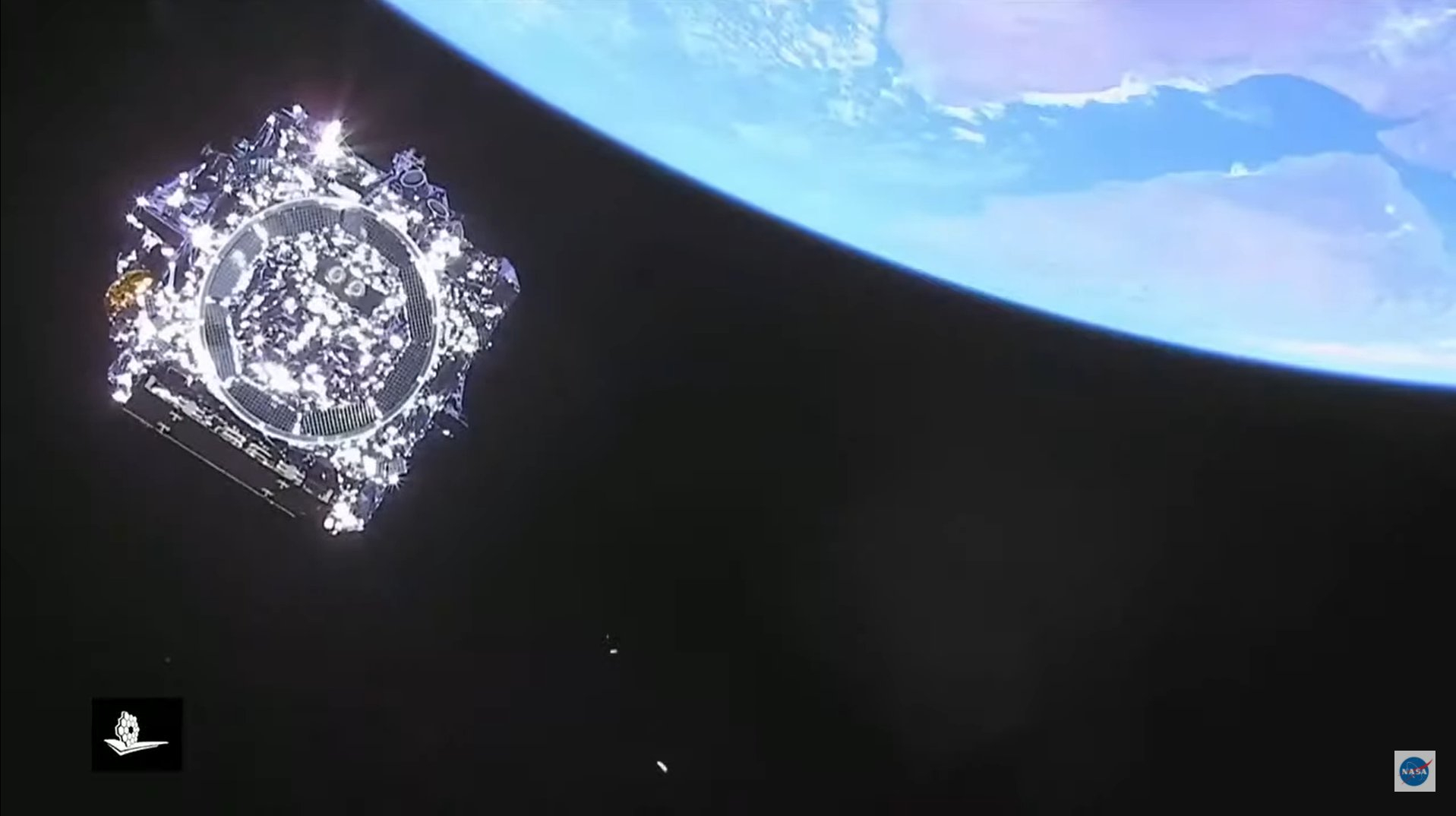
About 27 minutes after reaching space, the James Webb Space Telescope separated from its Ariane 5 rocket upper stage to begin its 29-day journey to the L2 Lagrange point.
A set of springs fired to push the space telescope free of the Ariane 5 upper stage, which carried the camera that took this photo.
The brilliant blue Earth makes a stunning background for the launch.
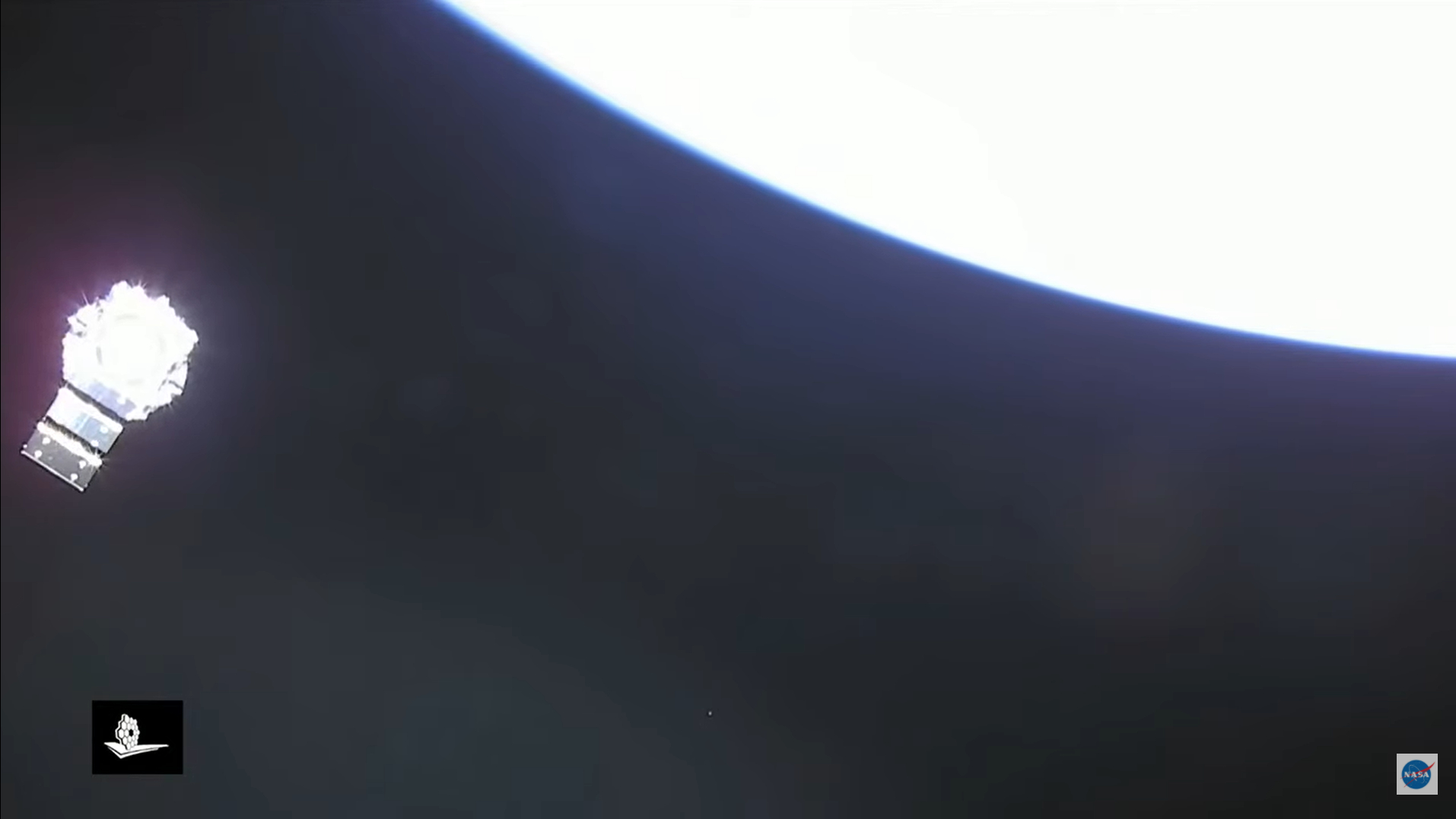
In a surprise for NASA and the world watching, the James Webb Space Telescope deployed its only solar array live on TV shortly after spacecraft separation.
The solar array deployment was a critical step that allows the Webb space telescope to generate power on its own. During launch, it was relying on battery power that would have eventually run out if the array had not deployed.
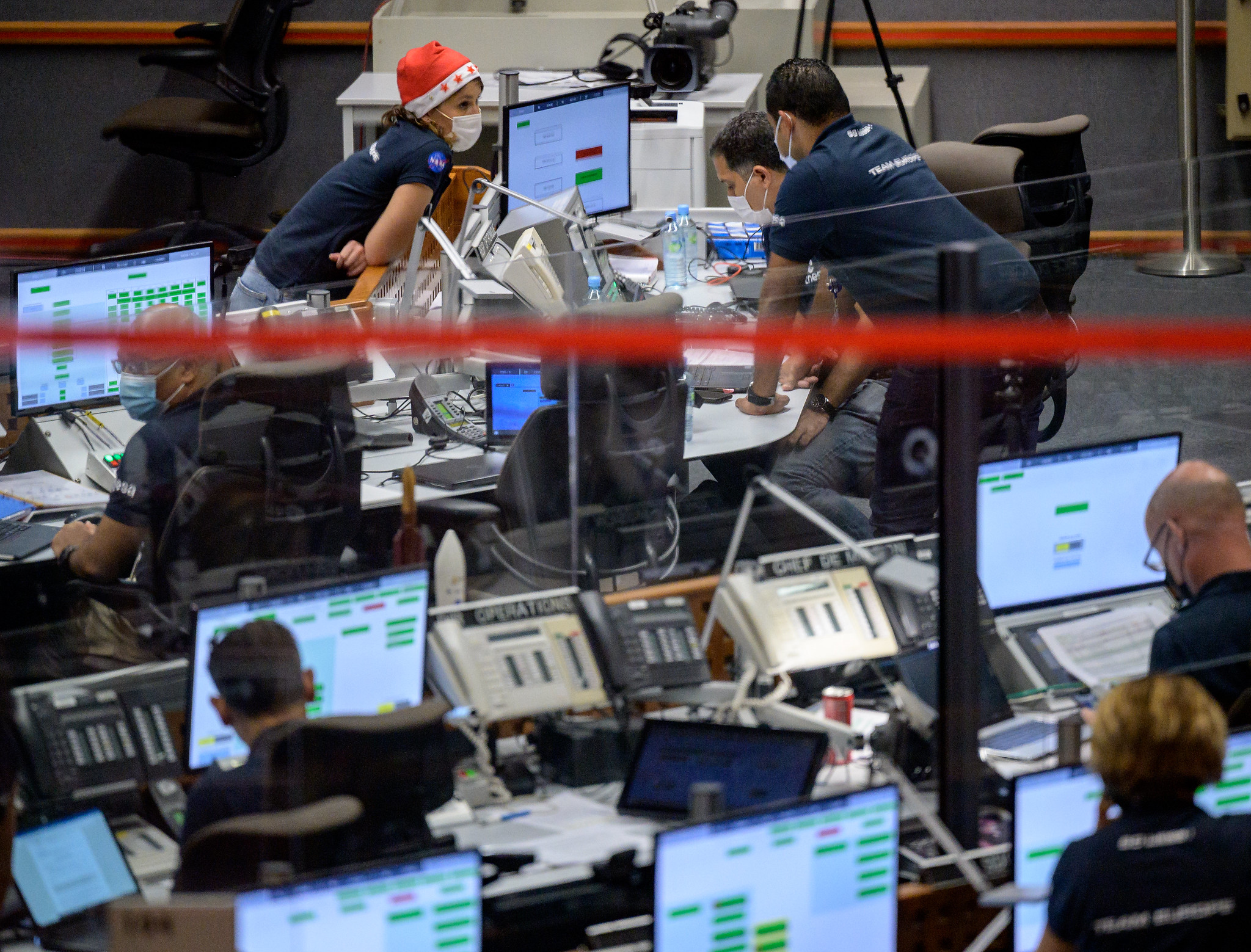
Another view of the James Webb Space Telescope's launch team in the final moments before liftoff.
"Today's countdown was as flawless as you can imagine," NASA spokesperson Rob Navias said after liftoff. "Everything fell together on this Christmas Day to send a new present to the world's astronomers."
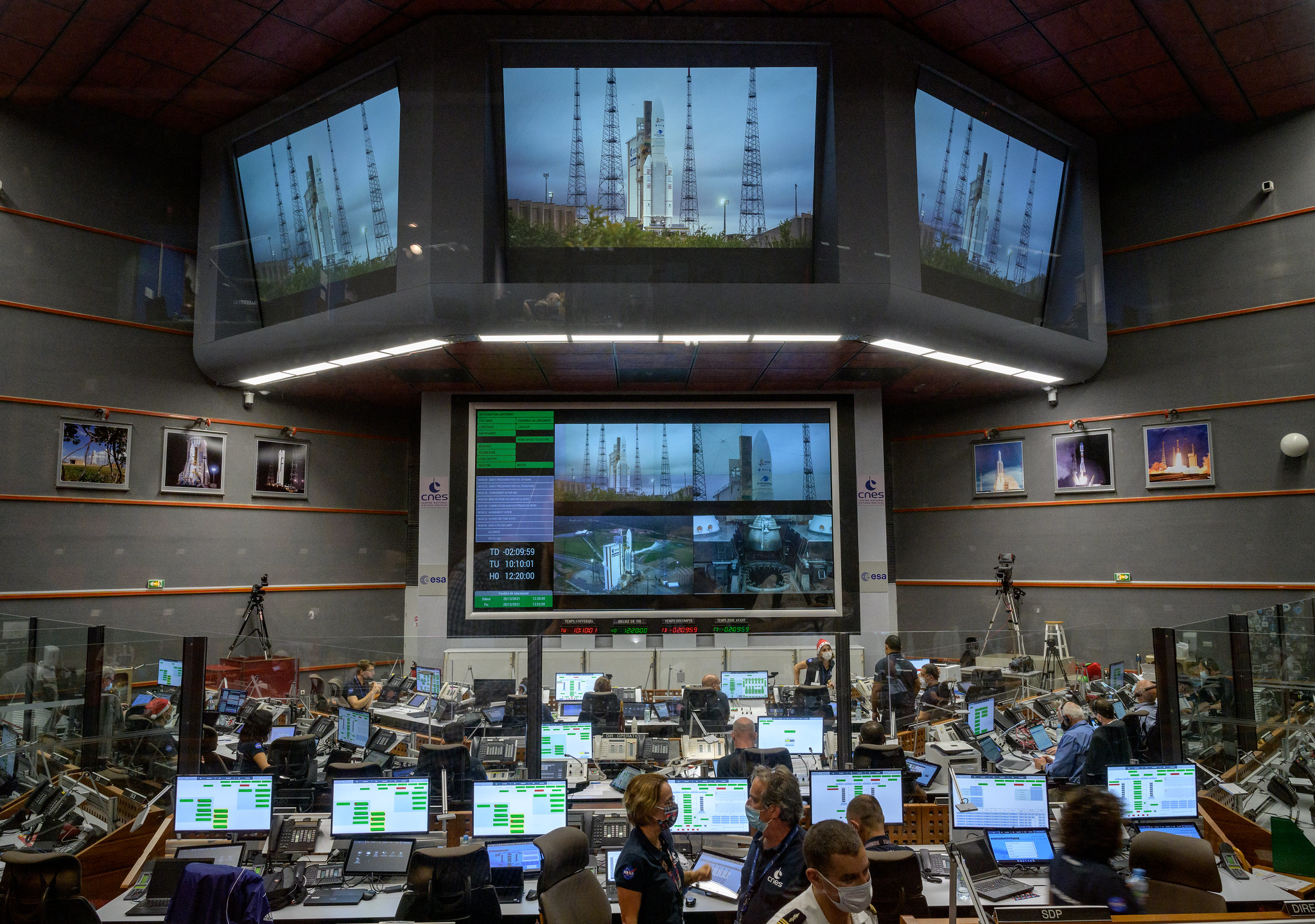
A view of Arianespace's Ariane 5 rocket launch control room at the Jupiter Center of the Guiana Space Center in Kourou, French Guiana.
The space center is the primary spaceport for the European Space Agency and other European countries and is the home port for the Ariane 5 rocket. Arianespace also launches Russian-built Soyuz rockets from the spaceport.
More James Webb Space Telescope reading:

Tariq is the award-winning Editor-in-Chief of Space.com and joined the team in 2001. He covers human spaceflight, as well as skywatching and entertainment. He became Space.com's Editor-in-Chief in 2019. Before joining Space.com, Tariq was a staff reporter for The Los Angeles Times covering education and city beats in La Habra, Fullerton and Huntington Beach. He's a recipient of the 2022 Harry Kolcum Award for excellence in space reporting and the 2025 Space Pioneer Award from the National Space Society. He is an Eagle Scout and Space Camp alum with journalism degrees from the USC and NYU. You can find Tariq at Space.com and as the co-host to the This Week In Space podcast on the TWiT network. To see his latest project, you can follow Tariq on Twitter @tariqjmalik.
